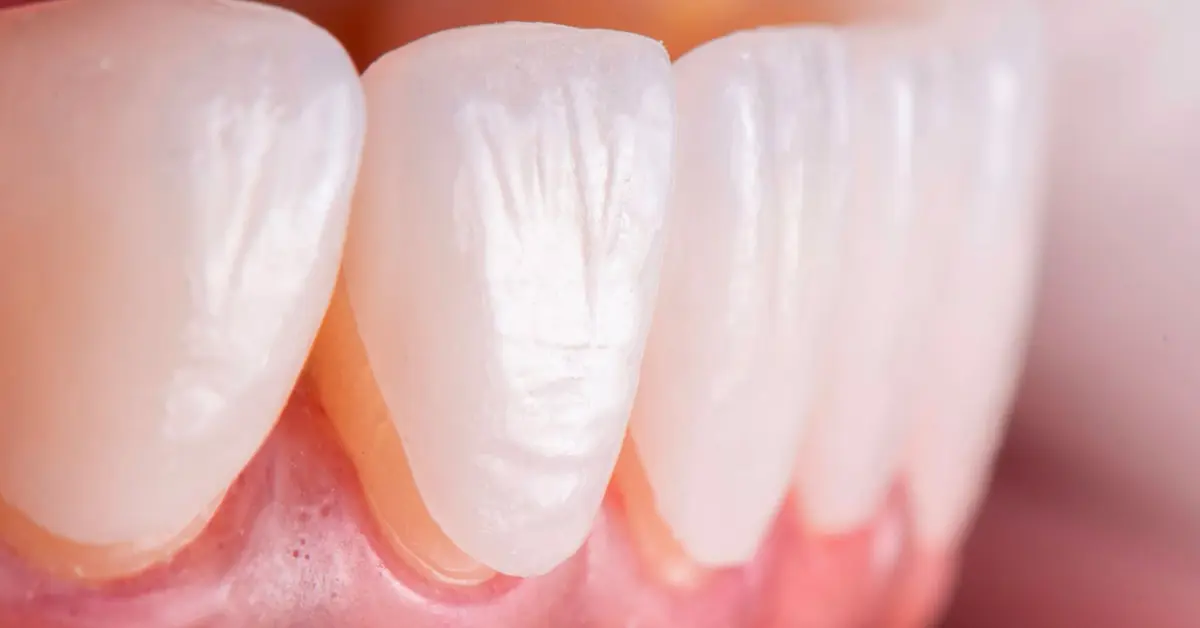Table of Contents
TogglePorcelain laminate care, when maintained with a clinical-level protocol, preserves the color and edge alignment of the laminates for many years. Avoiding abrasive products, maintaining stable gum health, and controlling biting forces are essential. The goal of daily hygiene is to keep plaque buildup low while avoiding scratching the laminate surface. Acid and pigment sources must be managed. Night guards reduce the risk of microcracks caused by clenching and grinding. Routine checkups evaluate edge leakage, adhesion, and gum response. The following plan is a simplified version of the steps I recommend to my patients in the clinic. Each step is applicable, measurable, and safe.
Porcelain Laminate Care: Daily Hygiene Protocol
The most critical step in porcelain laminate care is proper brushing. Use an ultra-soft bristle brush. Position it at a 45° angle to the gum line. Use short, sweeping motions. Do not increase pressure; the goal is not to damage the plaque biofilm or abrade the surface. Twice a day for 2 minutes is ideal. If you prefer an electric toothbrush, keep the pressure sensor on. The tongue and inner cheek surfaces should also be cleaned. Replace the brush every three months. If sensitivity occurs, soften the technique. Effectiveness increases significantly when brushing is complemented with floss and an interdental brush.
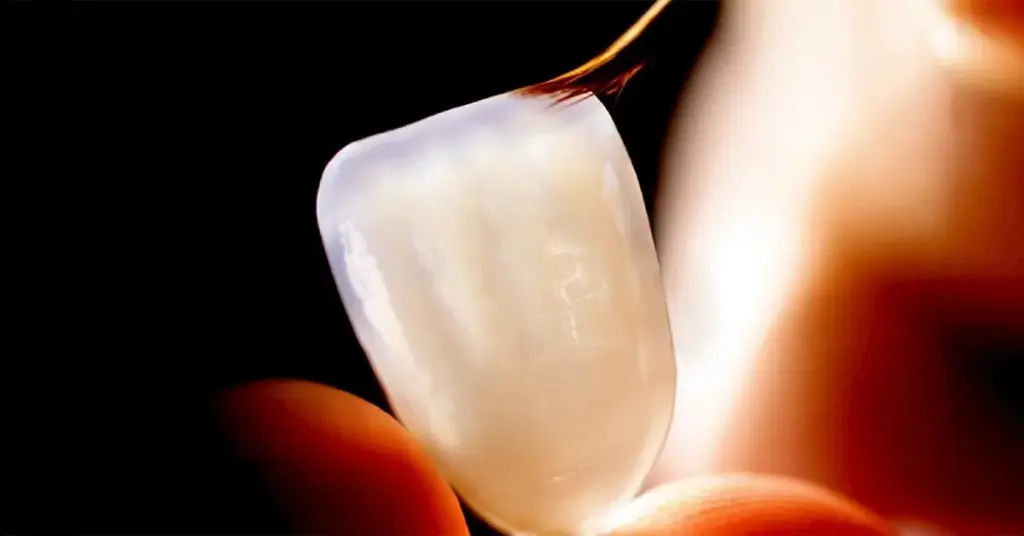
- Ultra-soft head
- 2×2 minute routine
- 45° edge-focused technique
- Pressure sensor on
- Replace every three months
Porcelain Veneer Care: Product Selection
Porcelain veneer care requires careful product selection. Choose a toothpaste with low RDA and no abrasive particles. Avoid pastes with large particles that promise “fast whitening.” Alcohol-free, fluoride-containing mouthwashes support plaque and odor management. Fluoride strengthens the natural enamel at the gum line. Polishing toothpastes can leave scratches if used incorrectly. Gentle polishing once or twice a week is sufficient to reduce the risk of wear. Avoid abrasive powders, baking soda, and lemon mixtures. Sensitivity gels provide short-term relief. Observe the response during the first week of product change. Discontinue use immediately if irritation occurs.
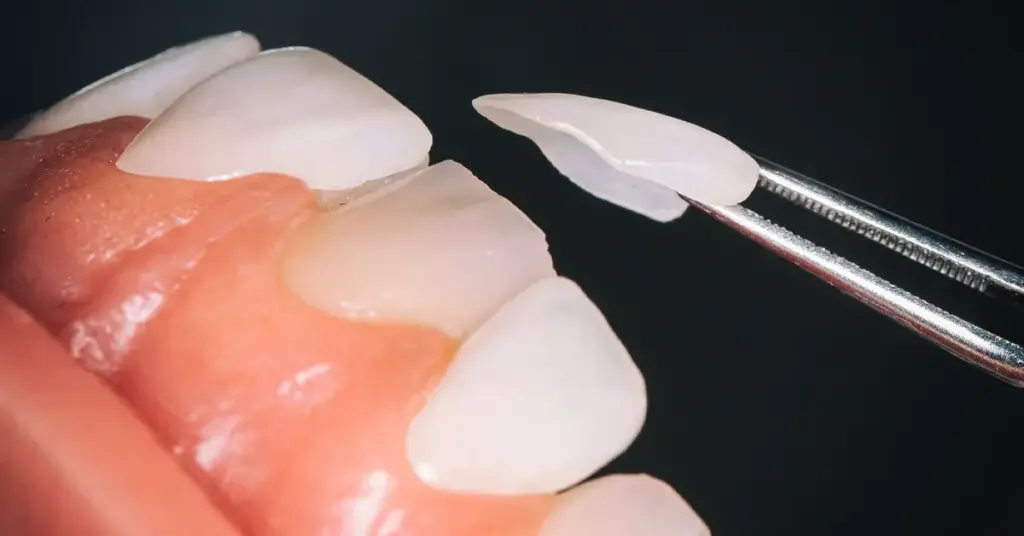
- Low RDA toothpaste
- Alcohol-free fluoride mouthwash
- No abrasive powders
- Gentle whitening paste 1–2 times per week
- Discontinue immediately if irritation occurs
Porcelain Laminate Care: Diet Management
Porcelain laminate care is directly related to diet. Coffee, tea, red wine, and dark sauces leave pigments. Rinse with water after consumption. Acidic drinks and lemon water can weaken enamel and composite bonds. Delay brushing for 30 minutes after consuming acids. Consecutive contact with very hot and very cold temperatures creates thermal stress. Do not crack hard-shelled foods with your front teeth. Reduce sugary snacks. High water consumption and fibrous foods support plaque control. If you notice color changes, schedule professional polishing. Habit management prolongs the effect of clinical polishing.

- Water after pigmented drinks
- Wait 30 minutes after acidic foods
- Chew hard foods with your back teeth
- Reduce hot-cold succession
- Polishing for color changes
Interdental Cleaning: Dental Floss, Interdental Brush, Water Jet
Porcelain laminate care is incomplete without interdental discipline. Wrap dental floss around the tooth using the “C technique.” Break the plaque bridge with gentle up-and-down movements. If the gap is wide, use an interdental brush of the size recommended by your dentist. Wire-bodied brushes have a low risk of scratching the coating; the correct size is essential. Water jets are effective under orthodontic wires or bridges. One session per day is sufficient. Gum bleeding should decrease within a few days. If it persists, plaque control is inadequate. Regular use keeps gum margins healthy. The risk of marginal leakage also decreases.
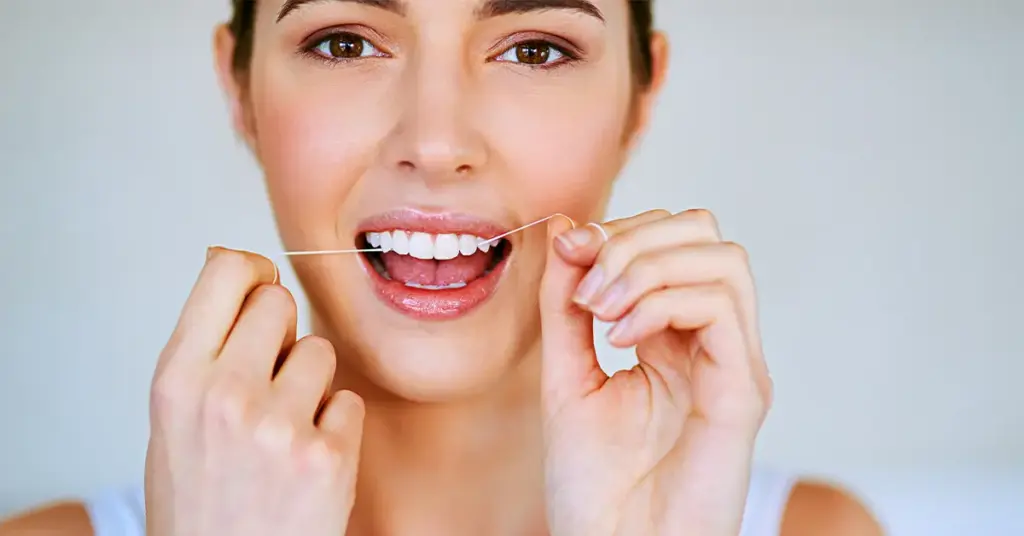
- Floss once a day
- Proper size interdental brush
- Water jet for hard-to-reach areas
- Gentle, continuous motion
- Review technique if bleeding occurs
Occlusal Protection: Night Guard and Trauma Prevention
Porcelain laminate maintenance requires balanced occlusal forces. Teeth grinding and clenching cause microcracks and edge loading. I recommend a custom-made hard stabilization plate. Ready-made soft plates may allow irregular contact. The plate should be adjusted regularly under dental supervision. Daily use requires habit formation. A separate mouthguard is required for athletes. Use warm water and neutral soap to clean the plate. Hot water causes deformation. Loss of transparency and odor are signs of inadequate cleaning. Morning jaw fatigue should decrease; if it does not, adjustment is necessary.
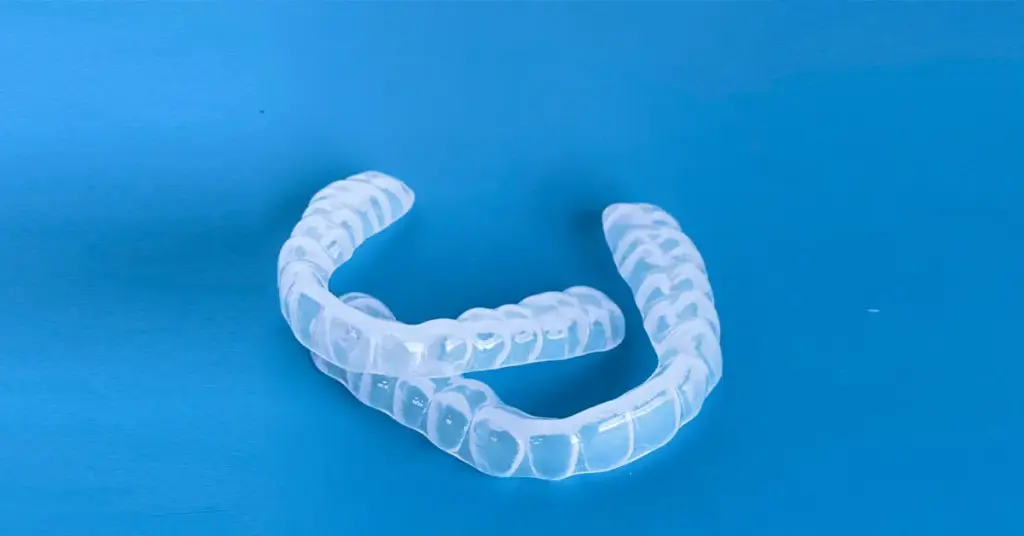
- Custom-made hard mouthguard
- Regular nightly use
- Cleaning with lukewarm water
- Separate mouthguard for sports
- Regular adjustment and check-ups
Clinical Follow-up: Polishing, Edge Check, and Emergencies
Porcelain laminate maintenance is completed with a professional check-up every six months. If necessary, gentle polishing is performed every three months. Rough edges are reduced using rubber tips and fine paste. Edge fit, gum response, and color stability are evaluated. If there is suspicion of leakage at the bonding line, early intervention is performed. Keeping records with X-rays and photographs facilitates monitoring changes. Do not attempt home bonding in case of breakage, dislodgement, or sudden sensitivity. Temporarily protect the sharp edge and make an appointment. Early intervention increases repair success and reduces costs.
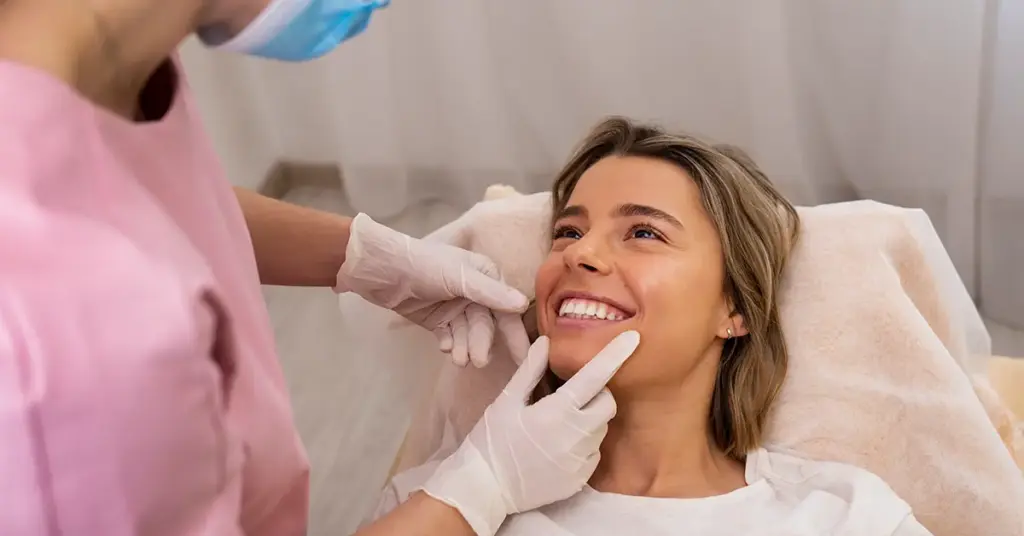
- Check-up every 6 months
- Polishing every 3 months if necessary
- Edge and gum evaluation
- Recording and photographic follow-up
- No home intervention in case of breakage
You can check out our social media for successful results.

